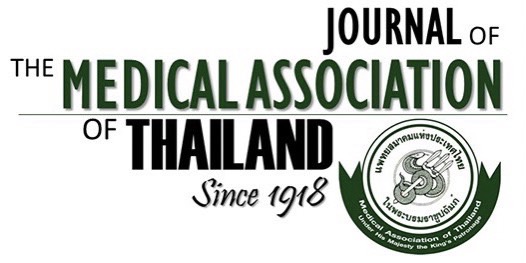A Comparison of Outcomes between Percutaneous Coronary Intervention versus Coronary Artery Bypass Surgery in Octogenarian Patients
Nuntaporn Wongcharoenkiat MD*, Damras Tresukosol MD, FSCAI, FAPSIC*, Pansak Laksanabunsong MD, FRCST**, Suthipol Udompunturak MD***
Affiliation : * Division of Cardiology, Department of Medicine, Siriraj Hospital, Mahidol University, Bangkok, Thailand ** Division of Cardiothoracic Surgery, Department of Surgery, Siriraj Hospital, Mahidol University, Bangkok, Thailand *** Department of Research Promotion, Faculty of Medicine Siriraj Hospital, Mahidol University, Bangkok, Thailand
Background : Percutaneous Coronary Intervention (PCI) is emerging as new revascularization procedure for coronary
artery disease patients. The octogenarians are the most fragile and vulnerable age group for any type of revascularization
therapy and usually discarded from any randomized trials. There is no consensus in the choice of treatment among
octogenarians including PCI and coronary artery bypass grafting (CABG).
Objective : To compare PCI and CABG among Thai octogenarians (> 80 years old) with coronary artery disease for
immediate and 24-month clinical outcomes.
Material and Method: Retrospective cohort study was conducted at Siriraj Hospital from January 2005 to December 2007
to obtain a complete 24-month follow-up period after revascularization. From CALYSTO database, a list of all octogenarians
was retrieved (n = 333); after cleaning of the data, 265 patients (PCI n = 202, CABG n = 63) were enrolled for the present
study. The primary endpoint is defined as a 30-day major adverse cardiac and cerebral event (MACCE). Secondary endpoint
is a 24-month major adverse event (MACE).
Results : The 30-day MACCE were 11.4% in PCI group vs. 44.4% in CABG group (p < 0.001), all cause-mortality was 2.5%
in PCI group vs. 8.3% in CABG group (p = 0.05), cardiovascular mortality was 1% vs. 5% (p = 0.046), mortality from
sepsis was 1.5% vs. 1.5% (p = 1.0). Recurrent MI was 5.4% vs. 4.8% (p = 0.74). Cerebrovascular event occurred in 0.5%
vs. 1.6% (p = 0.10). There was a crossover treatment as 0.5% vs. 0% (p = 1.0). There was no repeat target revascularization
at 30-day in both groups. Major vascular complication due to bleeding requiring > 5 of pack-red cell transfusion was more
common in CABG group (1.5% vs. 31.8%, p < 0.001).
At 24-month follow-up, MACE were 35.2% in PCI group vs. 27.9% in CABG group (p = 0.36), all cause-mortality
was 11.3% vs. 27.9% (p = 0.002), cardiovascular mortality was 1.5% vs. 11.5% (p < 0.001). Sepsis mortality was 2.5% vs.
11.1% (p = 0.05). MI occurred in 7.4% vs. 6.3% (p = 1.0). Repeat target revascularization was higher in PCI group (20.3%
vs. 0%, p < 0.001). However, hospital stay was longer in CABG group (4.7 + 9 vs. 16.8 + 17.4 days, p = 0.01).
Conclusion : The current revascularization strategy was evaluated. These results reflect our physician selection, patient
willingness to undergo the treatment option. Lesser 30-day and 24-month all-caused mortality, cardiovascular mortality,
hospital stay was observed in PCI treated octogenarians with a trade off of more frequent repeat target revascularization.
Keywords : PCI, Octogenarian, CABG



